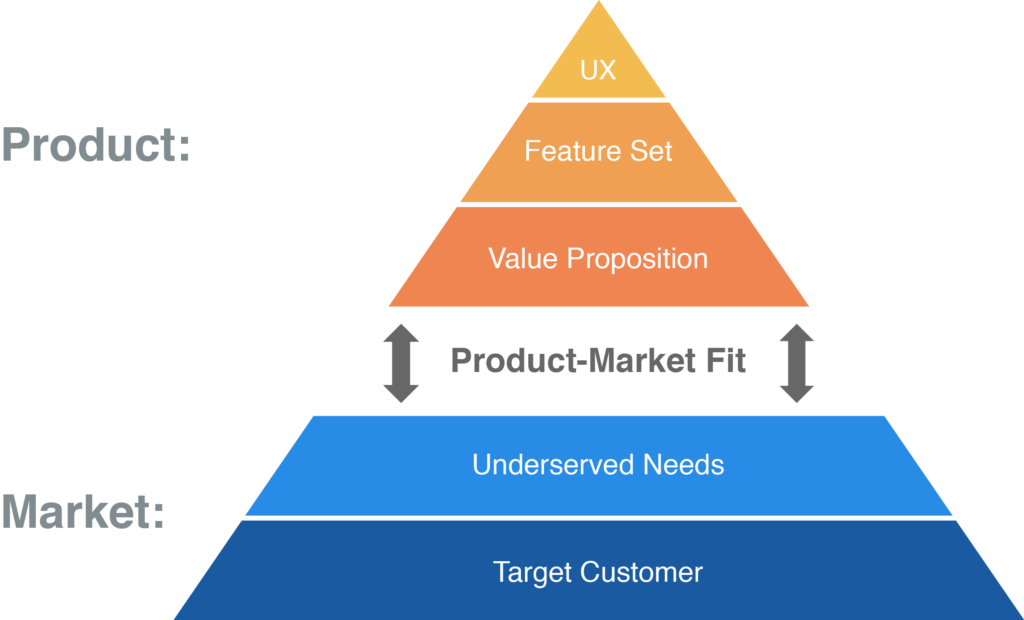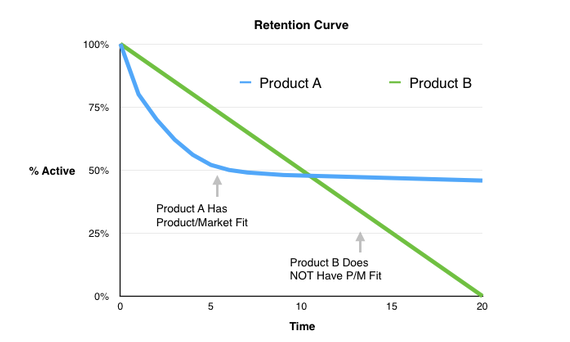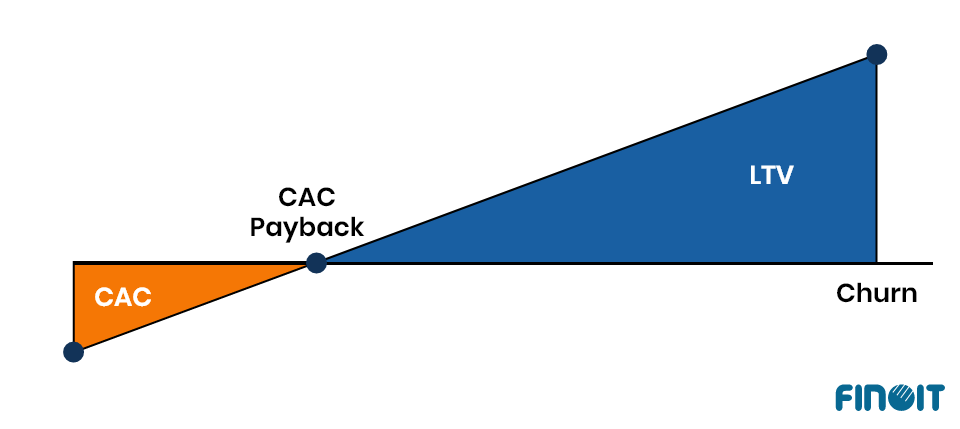Signs Your B2B SaaS Product is Out of Product-market Fit: How to Regain Your Footing

Landing on a solid SaaS product market fit is a dream come true for any startup, but what happens when that dream turns into a nightmare? Unfortunately, it’s not uncommon for a company to fall out of favor with its target audience, leaving founders scratching their heads and struggling to regain their footing.
According to a recent survey by CB Insights, the main reasons for business failure were a lack of capital and an inability to get financing/investor interest, while a lack of market demand was close behind. In fact, 42% of the surveyed startups cited this as the primary reason for their downfall.
As entrepreneur and investor Marc Andreessen put it, “Product market fit means being in a good market with a product that can satisfy that market.” But as markets change and customer preferences evolve, even the best products can become irrelevant.
So, what can you do when you realize that your product is no longer resonating with your target audience? The answer may lie in understanding your customers on a deeper level. You’ll need to ask tough questions, listen to feedback (even if it hurts), and be willing to pivot your strategy if necessary. Embracing innovative strategies for enhancing SaaS customer experience can transform these challenges into opportunities, allowing you to realign your product with customer expectations. It’s not easy, but it’s necessary if you want to avoid becoming another statistic.
In this article, we’ll explore some common warning signs that your SaaS product may be falling out of product-market fit, and offer tips and strategies for how to get back on track. So, whether you’re a seasoned entrepreneur or just starting out, read on to learn how to keep your product relevant and your customers happy.
What does it mean to fall out of product-market fit?
Falling out of product-market fit means that your SaaS product is no longer meeting the needs of your target market. This can happen for a variety of reasons, such as changes in the market, increased competition, or a failure to innovate. When you fall out of product-market fit, your business may experience a decline in revenue, growth, and customer satisfaction.

Image source:- Dan Olsen’s The Lean Product Playbook
What are the signs that you’ve fallen out of product-market fit?
Product-market fit is essential for the success of any SaaS business. It is the stage where your product or service meets the needs and desires of your target market. However, there are signs that you may have fallen out of product-market fit, which can negatively impact your revenue and overall success. Here are some detailed examples and statistics to help you recognize the signs:
Surviving the revenue downturn
If your revenue is declining or stagnant, it may be a sign that your product or service is no longer resonating with your target market. For example, Transpose, a comprehensive information management platform, failed to achieve product-market fit due to a flawed business model, which ultimately led to its closure in 2015. Despite raising between $1M-$10M in funding and employing 10-50 people, the platform was unable to generate enough revenue to sustain its operations. To avoid similar outcomes, focusing on strategies to reduce SaaS development cost while ensuring that your business model aligns with market needs is crucial for achieving and maintaining B2B SaaS product market fit.
Turning the tide
Decreased customer satisfaction is a glaring indication that a business is losing its grip on product-market fit. Delite, a B2B wholesale order platform, is a prime example of this. Despite its attempt to simplify the wholesale ordering process for businesses, it failed to cater to any real customer needs, resulting in a decline in satisfaction levels and, eventually, its demise in 2017. This highlights the importance of recognizing and addressing authentic customer pain points to establish and sustain product-market fit.
Finding your way
Lack of focus is a key reason why startups fall out of product-market fit. When a product or service loses relevance, it opens the door for competitors to gain an edge in the market. Krit’s experience in 2015 is a prime example – they launched Ink, a promising tool for freelancers, but failed to make it work due to lack of focus. However, they didn’t give up. Krit pivoted and built a successful consulting business, showing that it’s possible to bounce back from failure with perseverance and determination.
Breaking through the growth barrier
If you are struggling to grow your business or enter new markets, it may be a sign that your product or service is not compelling with your target product market fit. For instance, in 2020, Airbnb faced significant challenges in growing its business due to the pandemic’s impact on travel. This struggle to grow highlighted a potential gap in Airbnb’s product-market fit.
Key Insights into Measuring Product-Market Fit
Product-market fit is crucial for the success of any SaaS business, and falling out of it can be detrimental. Here are some steps you can take to get back on track:
Retain and sustain
Over and over, we heard retention is a crucial output metric that serves as a strong indicator of user value, especially throughout the startup lifecycle. As stated by Dan Olsen, a product management trainer and author of the lean product playbook, “Retention rate is the best measure of product-market fit, because it is a behavioral measure of repeat usage.” It is important to define retention clearly for your product and understand its “value metric.” To measure retention, follow these steps outlined by Gustaf Alstromer, a Partner at Y Combinator:
- Identify the metric that represents the value users get from your product.
- Measure the repeat usage of that metric, which refers to how often users should be using your product.
- Measure retention and aim for a flat retention curve, which helps you understand repeat usage.

Image source:- brianbalfour.com
Once you have established a baseline for improvement, run tests to see what moves your retention metric. You can try improving activation, scaling out more targeted acquisition strategies, and resurrecting users who have dropped off to boost retention.
Keep on your radar
Retention is important, but startups need to broaden their scope and track other key metrics for success. There are critical metrics that help understand business performance.
- Customer acquisition cost (CAC)
- lifetime value (LTV)
- churn rate, and
- Conversion rates

CAC shows the cost of acquiring each customer, LTV estimates the revenue a customer generates over their lifetime, churn rate measures how many customers stop using the product, and conversion rate show the percentage of website visitors that become paying customers. SaaS startups can use these metrics to make informed decisions and improve their business strategies for long-term success. Regular monitoring is crucial to identify areas for improvement and maintain a competitive edge.
A journey, not a destination
Product-market fit is not binary, but rather a spectrum. Analyzing a company’s customer data helps us understand where a given company sits on that spectrum- stated by Arjun Sethi Co-Founder & Partner, Tribe capital.
Finding product-market fit is not a one-time event, but rather an ongoing journey with various indicators to track. While retention is a key signal of product-market fit, it’s not a definitive measure. SaaS startups should be aware of the different indicators that contribute to product-market fit and strive to improve them over time. Don’t expect a sudden moment of clarity, and don’t be discouraged by initial metrics. Instead, be proactive in analyzing your data and continuously nudging your product towards better fit with your target market
Don’t compete, define metrics for success
Don’t fall into the trap of constantly comparing yourself to competitors. Instead, identify the key metric that matters for your product, which is often linked to retention, and focus on improving it. To distinguish yourself in a crowded SaaS landscape, you need to excel at one thing. Avoiding common SaaS marketing mistakes is crucial as you navigate your path. While analyzing your competitors, let their data guide your assumptions about what actions will make a difference for your business. By defining your own unique set of metrics, you can better track your progress and ultimately achieve success on your own terms.
Embrace moving target
As you grow, you’ll learn new things, build new features, possibly pivot, and continue your journey to finding product-market fit. The biggest thing is to remind yourself that you’re always on a journey to finding product-market fit and should never stop testing, asking questions and capturing feedback and data.- Jacob George global product coach, founders factory.
Product-market fit is not a static state; it is constantly evolving. As your business grows and evolves, so too will the indicators of product-market fit. It’s important to recognize that the goal posts will shift over time, and that’s perfectly normal. Continuously iterating to retain product-market fit is crucial, especially in today’s rapidly changing markets.
Established SaaS software companies also face the challenge of finding post-product-market fit, particularly for new products as they expand their market share. It’s important to maintain focus and prioritize the most pressing customer problems and solutions, rather than getting distracted by new areas. This requires a constant pulse on product-market fit, with tight data feedback loops to monitor it.
Ultimately, user segmentation is key to maintaining product-market fit, and a mindset of always launching will help you stay ahead of the curve. By embracing change and keeping a constant eye on the pulse of product-market fit, you can continue to thrive and grow in even the most dynamic markets.
Closing Thoughts
No matter what stage you are in your journey to finding product-market fit, having a solid foundation and a scalable framework is crucial. But beyond that, collecting and analyzing data is essential to making informed decisions and managing your business effectively. Partnering with a reliable SaaS application development company can provide the expertise and support needed to build this foundation. As Raymond Doraisamy of StartupX puts it, “If you don’t collect data, you’ll be in the dark when it comes to what to do next.”
Need Help With Your
SaaS Development?
- Proven
- Transparent
- Dependable


